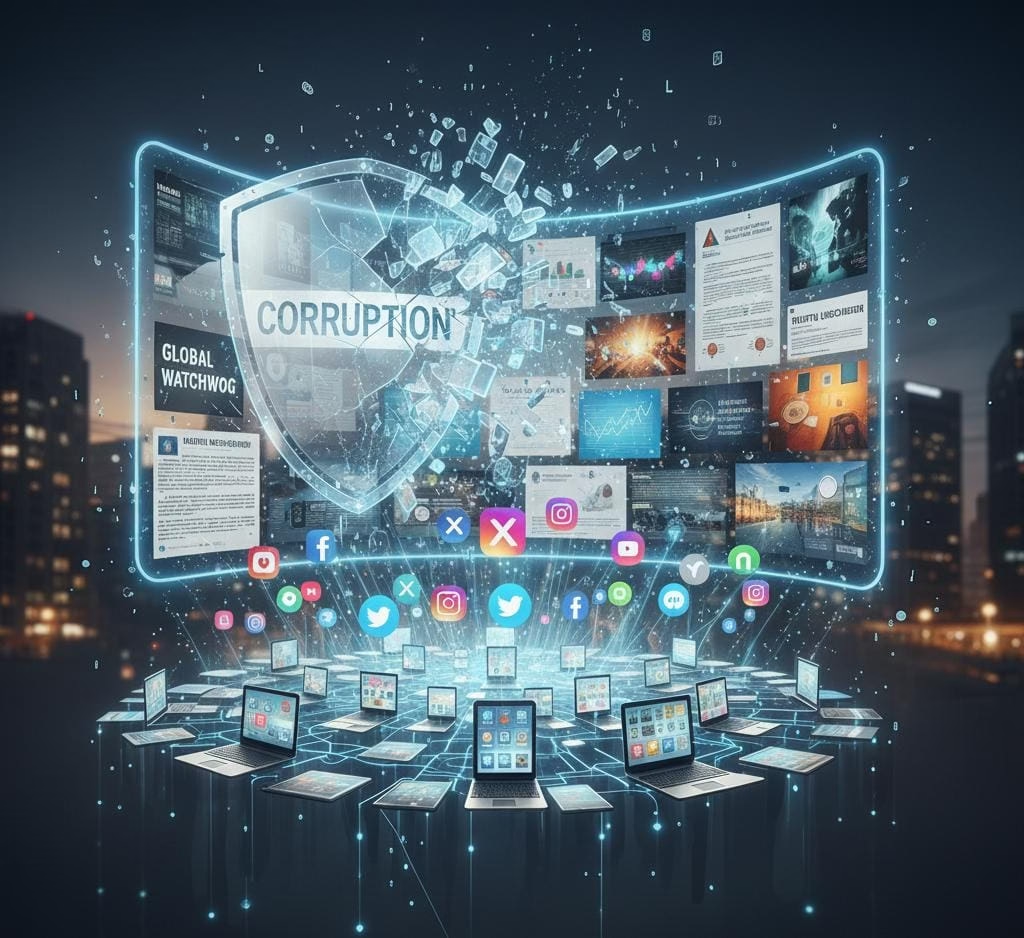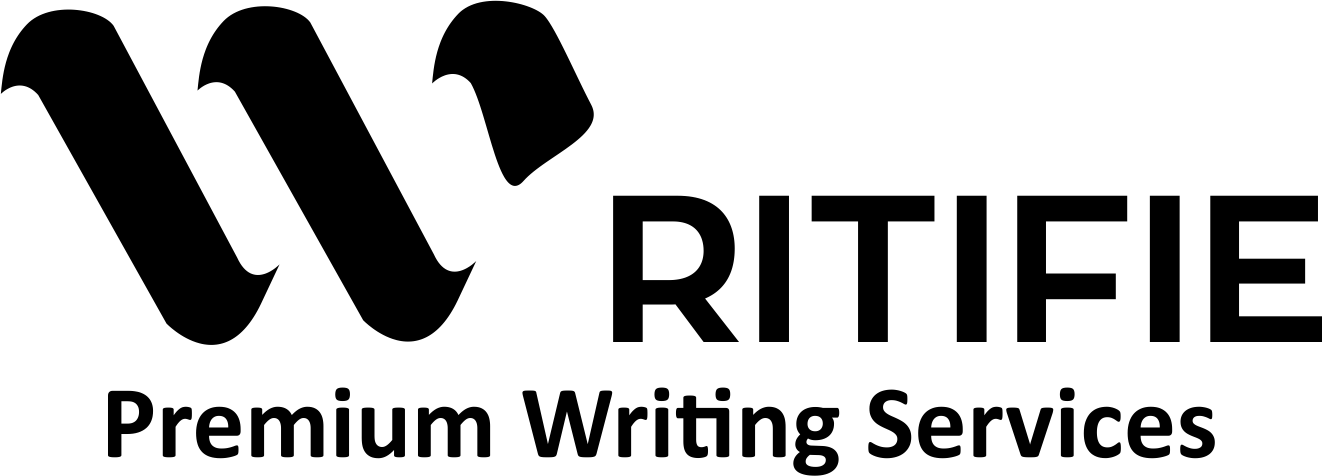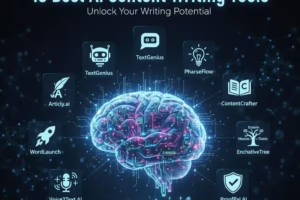
Role of Technology and Social Media in Exposing Corruption
How Technology and Social Media are Being Used To Uncover Corruption
In the era of Technological Advancements and widespread internet connections, social media and technology have emerged as powerful tools in the Anti-Corruption Paradigm. New technologies also provide avenues for transparency, accountability and activism, where citizens can expose corrupt practices and demand social change. In this blog post, we will delve into how these innovations have transformed the fight against corruption worldwide.
Technology – A Double-Edged Sword For The Fight Against Corruption
At the same Time, technology has transformed every domain of life of human beings, including the areas of State and social responsibility. From blockchain to big data analytics, modern technology is facilitating the ability to track corrupt activities. With digital records, the administrative process can be tracked more efficiently and monitored for potential fraudulent practices.
For example, the emergence of blockchain technology is one of the most interesting developments in the fight against corruption. Blockchain is inherently transparent, and this means that altering or manipulating records of transactions is virtually impossible. This can be particularly valuable in areas where corruption tends to flourish, such as public procurement, land registration, and financial transactions, where transparency is lacking.
Another technology that’s playing an important role in exposing corruption is artificial intelligence (AI). AI-powered systems can scan through enormous volumes of data to identify irregularities that can be signs of fraudulent activity. Governments and organisations are using these systems to increase transparency in finances, actively track government spending, and audit public projects in real-time, as well as detect corruption before it escalates.
Social Media: Whistle Blower/Citizen Activist Hub
Social platforms: Social media platforms, such as Twitter, Facebook, and Instagram, have proven to be an essential channel for exposing corruption. These sites give citizens a voice they have never had before, a voice to spread information to large audiences with increasing speed. The unprecedented anonymity and exposure associated with these platforms have enabled whistle-blowers everywhere to share information on corrupt activities without fear of punishment.
One of the most potent examples of this in action is the # MeToo movement, which, although primarily focused on sexual harassment, has shed light on the role that social media can play in surfacing issues that have been hidden from view. Likewise, anti-racism movements like BlackLivesMatter have utilised social media to shed light on instances of corruption in law enforcement and call for justice and system reform.
With the amount of information that is shared on social media, many governments and organisations are under pressure to do something. For the public, the possibility of mobilising in real-time has forced governments to deal with issues of corruption that might have otherwise gone unnoticed. For example, the Panama Papers, which revealed hidden, offshore financial activities of leaders of states and business elites, were made possible by social media- and digital technology-based investigative journalism.
Citizen journalism and the power of the crowd
Crowdsourcing has enabled citizens to report corrupt activities directly to the public, bypassing traditional media channels. Thanks to this new type of citizen journalism, it is more difficult for corrupt practices to go unnoticed. The internet has provided new avenues for ordinary people to record and disseminate evidence of corruption that can go viral and attract the attention of the entire world.
In many instances, videos captured by citizens documenting acts of corruption have sparked immediate public outrage, triggering legal investigations and social movements. Traditional media often pick up the video, and that’s a snowball effect, which makes the authorities answer for what they have done.
The Arab Spring is a prime example of how social media and social technology can empower citizens to stand up against corrupt governments. Through the use of social media platforms such as Twitter and Facebook, people were able to organise protests, share information, and stream live coverage of their movements. All of this eventually paved the way for the downfall of corrupt governments in Tunisia, Egypt, and Libya, demonstrating that technology could be a catalyst for political change.
Speaking the Truth and Holding Leaders to Account
One of the primary ways technology and social media are utilised in the fight against corruption is by enhancing transparency. Digital platforms can help governments monitor their spending, track the progress of public procurement, and help ensure that public funds are spent for the intended purpose. Transparency is essential for reducing corruption because it becomes more difficult for officials to siphon resources for their own use.
Also important is how social media can hold leaders accountable. When political leaders engage in unethical behaviour, we know that their actions can be broadcast to millions of people almost instantly. From investigations to protests to resignations, social media can rally people together and help to put pressure on leaders to do the right thing.
In various instances, social media sites have been used to mobilise people in large-scale public protests for accountability. In the case of the so-called “Car Wash” scandal in Brazil, for example, social media helped mobilise protests against corrupt politicians implicated in the scandal, leading to some criminal cases being investigated and prosecuted.
The opportunities and risks in using technology to combat corruption
While social media and technology have proven to be an effective means of exposing corruption, they also present challenges. In many countries, citizens lack the right to freely express their concerns because of internet censorship and surveillance that governments are implementing on their national internet systems. Governments keep a close eye on online activities. If citizens attempt to expose corruption, they often target those who try to reveal it, especially when the corruption is at a high level.
Furthermore, the dissemination of fake news and misinformation on social media can have a detrimental impact on anti-corruption campaigns and initiatives. While social networks such as Facebook and Twitter have taken steps to limit the spread of misinformation, they continue to be powerful enablers of individuals who seek to defend corrupt systems.
Additionally, not all technologies are inherently transparent by their very nature. For instance, in many countries, there has been an increase in the use of AI-based surveillance technologies and facial recognition, which has raised concerns about privacy and human rights abuses. While these technologies can be used for law enforcement purposes, they can also be abused to intimidate and suppress dissenters, making individuals who expose corruption even more silenced and invisible.
Conclusion: The Future of Technology for Fighting Corruption
The use of technology and social media to reveal corruption is also playing an increasingly important role. As technology continues to evolve, it will create even more opportunities for transparency, accountability and activism. However, to reach their full potential, it is essential to strike a balance between utilising these tools to combat corruption while also mitigating the risks associated with their use, such as censorship, surveillance, and misinformation.
Overall, citizen activism via social media platforms and the technological innovations they have brought will change the way we govern in the future, ushering in a new society that is more transparent, accountable, and free from corruption. As we have entered the age of digital lighting, the fight against corruption will again be affected by these powerful media.
Tag:Corruption

